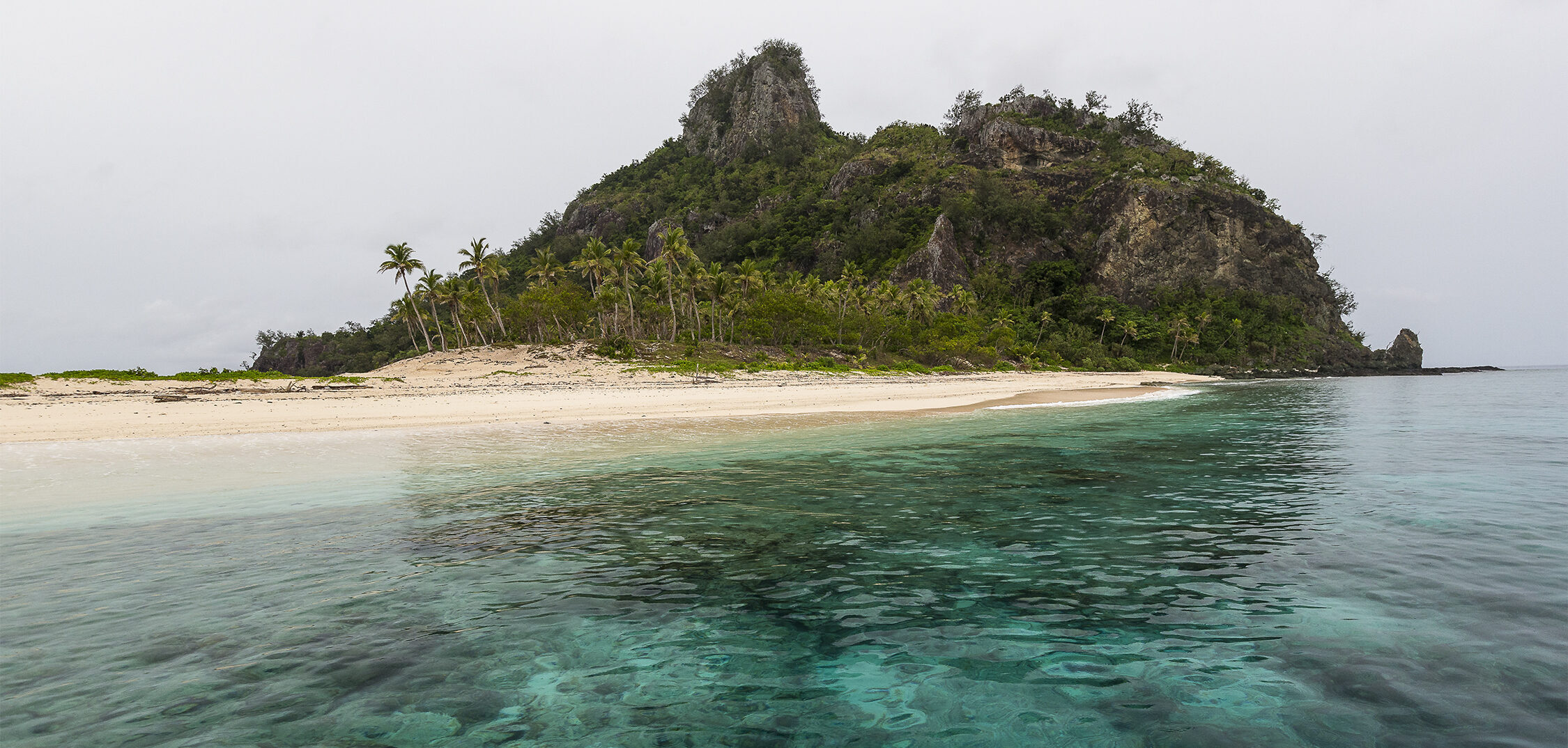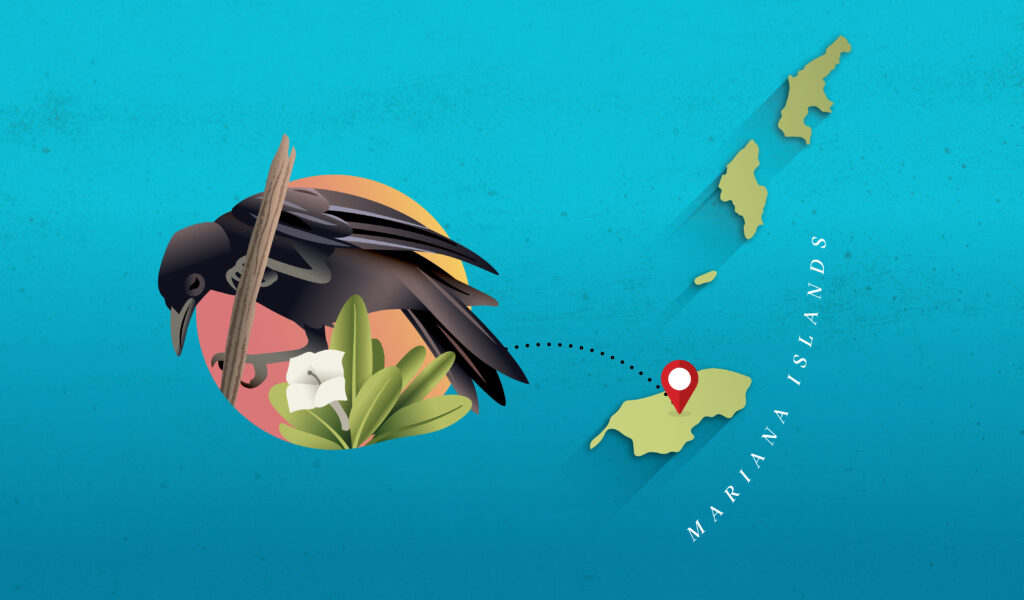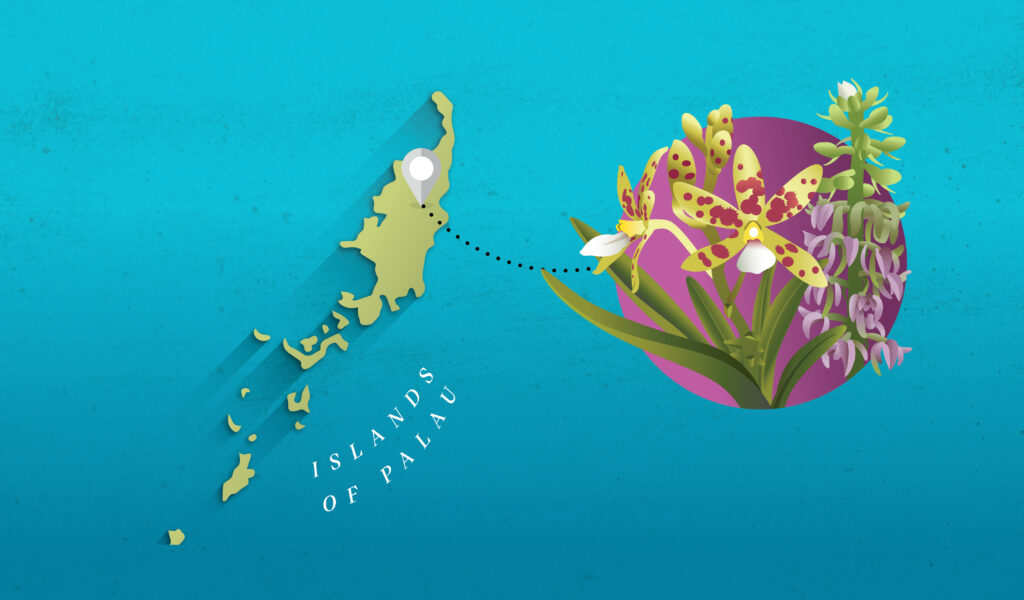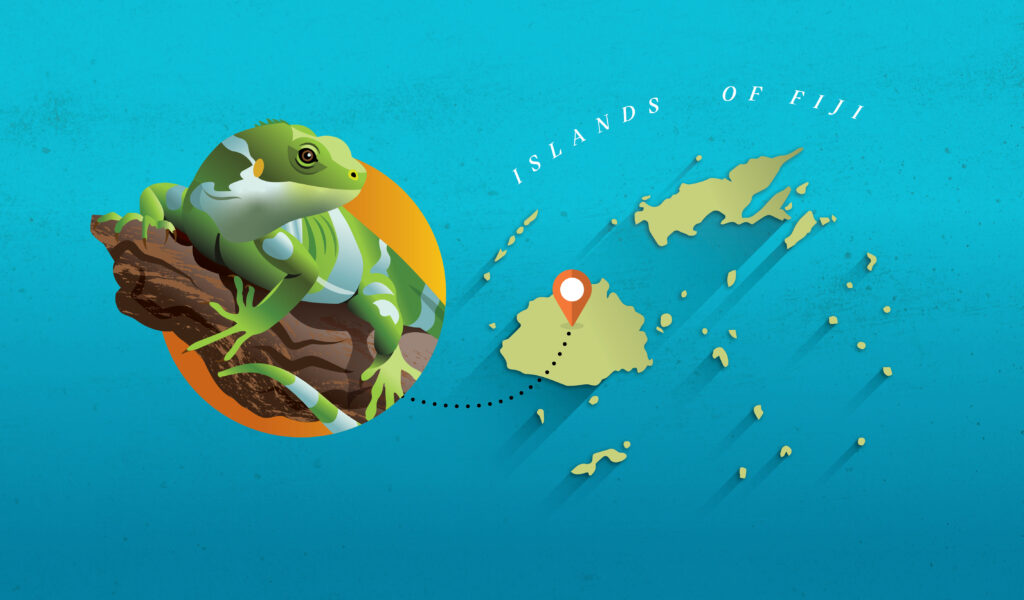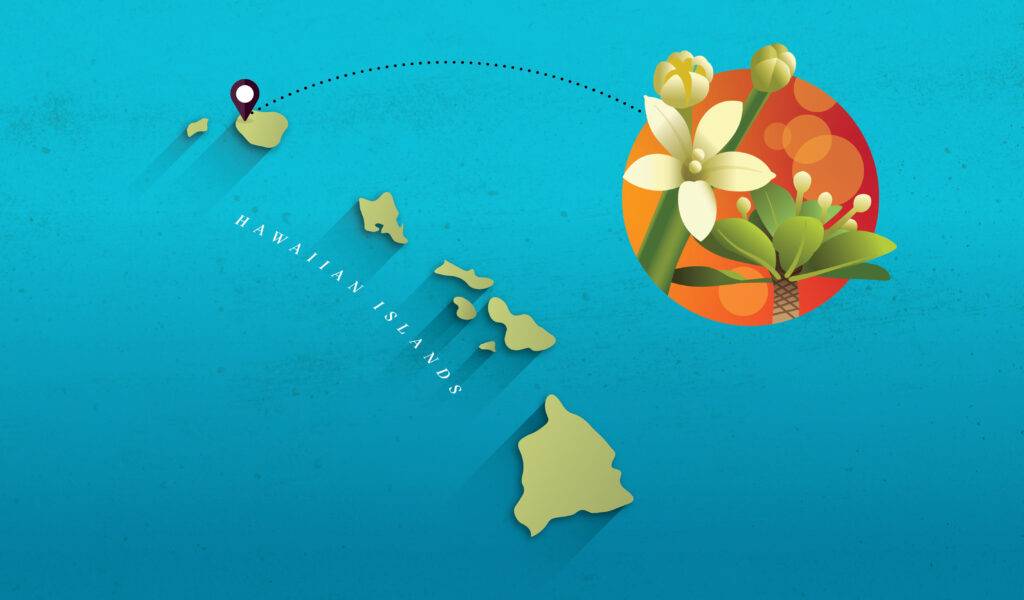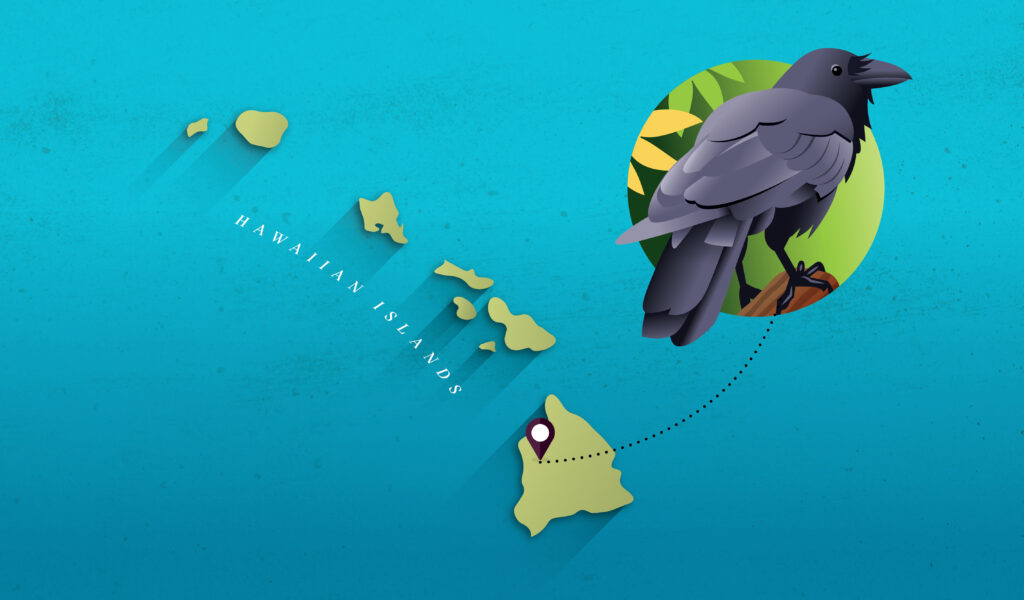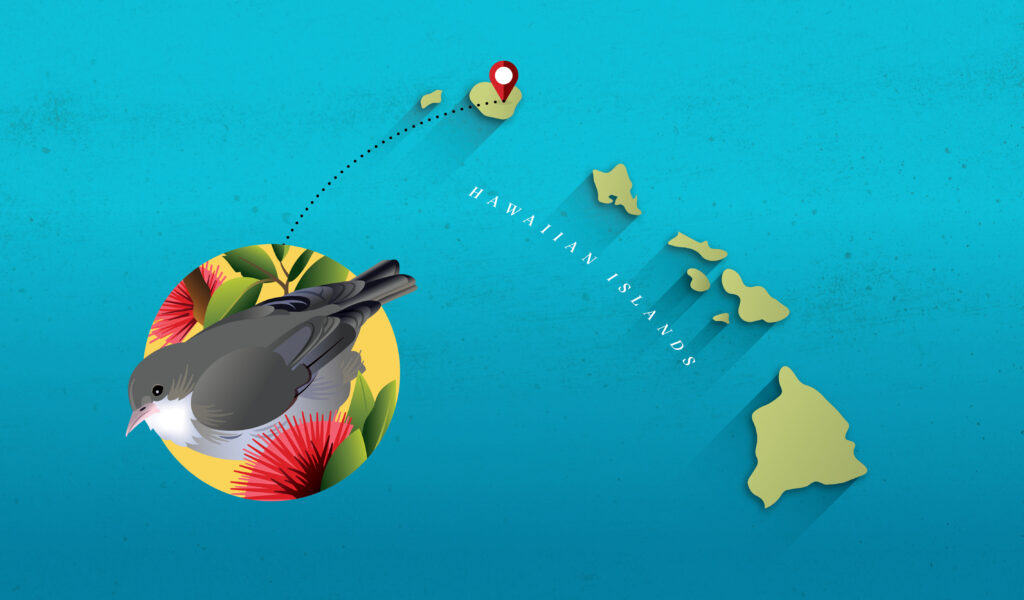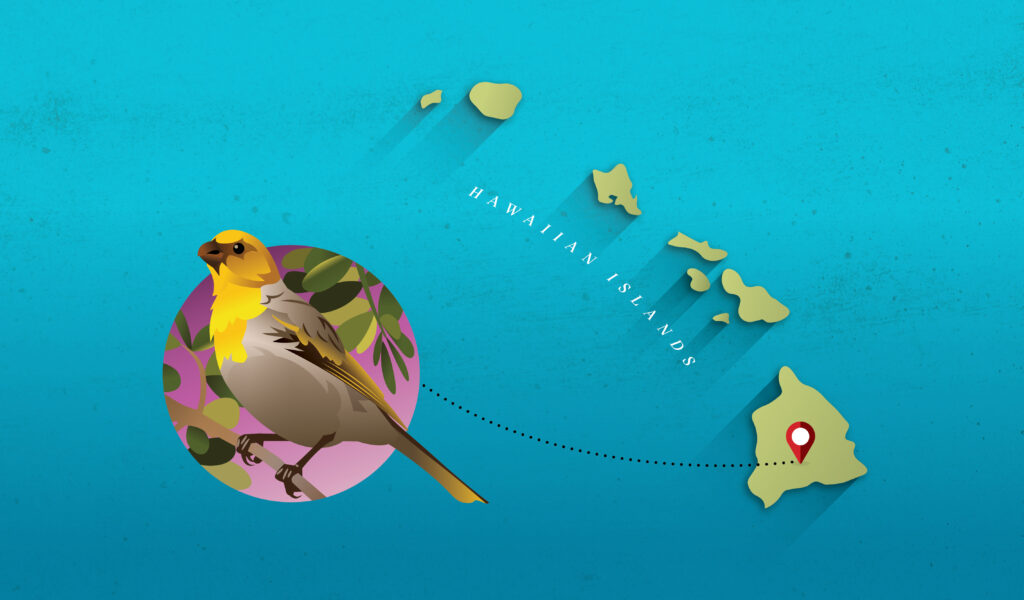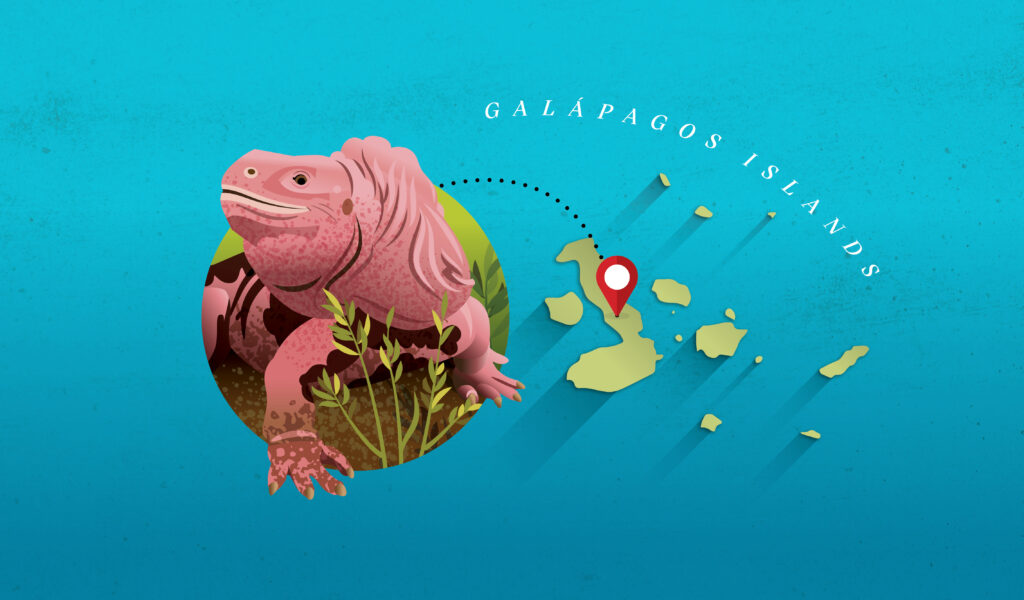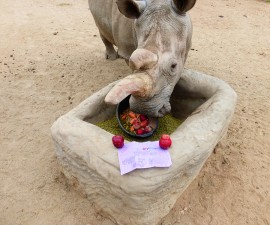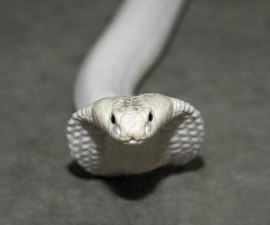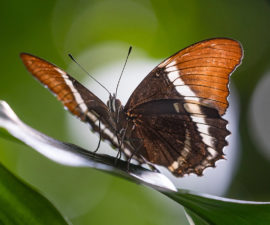BY DONNA PARHAM
ILLUSTRATIONS BY AMY BLANDFORD
Island ecosystems are unique—and fragile. Wildlife face threats that include introduced species and diseases, habitat loss, and the cascading impacts of climate change. Here are some insights into how San Diego Zoo Wildlife Alliance is rebuilding sustainable populations of critically endangered wildlife in the Pacific.
ÅGA
Mariana crow Corvus kubaryi
Extirpated from Guam by the invasive brown tree snake and with a population of only about 130, the åga survives only on the 33-square-mile, snake-free island of Rota, in the Mariana Islands. We are helping headstart chicks before reintroducing them into the jungles of Rota, where they integrate with the rest of the population.
PALAU ORCHIDS
Dienia vokensii | Dipodium freycinetioides
Palau’s rich diversity of orchids includes more than 30 endemic species. Many are at risk of disappearing due to wildlife trafficking and habitat loss. We are collaborating to reduce the demand for wild-collected specimens by propagating the orchids locally and creating a sustainable supply. San Diego Zoo Wildlife Alliance funded a micropropagation lab, and Zoo horticulturists traveled to Palau to help build a plant nursery and to conduct workshops on seed collection and propagation techniques.
VOKAI
Fijian iguanas Brachylophus spp.
Fijian iguanas inhabit only about 30 of Fiji’s 300 islands, and most populations are in decline. Significant genetic diversity among populations suggests there may be several species—raising questions about the appropriate conservation units for the iguanas. We support our collaborators in Fiji in educational outreach, habitat restoration, and wildlife care expertise.
ĀLULA
Cabbage-on-a-stick Brighamia insignis
What happens when a pollinator goes extinct? The ālula’s pollinator was the presumed-extinct Hawaiian hawkmoth; today, horticulturists must handpollinate its yellow flowers. Botanic gardens are working together to preserve genetic diversity in the ālula by using a worldwide “metacollection” approach. The San Diego Zoo’s Hawaiian Native Plant Garden is a safe haven for these unusual plants, which once grew on Kaua’i and Ni’ihau.
‘ALALĀ
Hawaiian crow Corvus hawaiiensis
Reintroducing the culturally important ‘alalā to its native habitat on the island of Hawai’i comes with challenges—such as understanding how ‘alalā co-exist with their natural predator the ‘io (Hawaiian hawk). From fewer than 20 birds in the 1990s, we have grown the population to a maximum of 143. Future releases of ‘alalā into native forest on the island of Hawai‘i, as well as Maui Nui, are the next exciting milestones for species recovery
‘AKIKIKI
Hawaiian honeycreeper Oryomystis bairdi
There are fewer than 50 ‘akikiki remaining in the wild, and our rescue efforts are helping secure a future for the species. We’re bringing the remaining birds into the safety and protection of our care, and in our conservation breeding centers, founding individuals reared from eggs collected from wild nests are now producing their own offspring.
PALILA
Hawaiian honeycreeper Loxioides bailleui
The palila is the last surviving member of 16 species of finch-billed, seedeating birds in the main Hawaiian Islands. Invasive, non-native species extirpated populations on Kaua‘i and O‘ahu. In the future, we hope to bolster the only remaining population in its native habitat—high on the slopes of Mauna Kea on the island of Hawai‘i.
IGUANA ROSADA
Galápagos pink iguana Conolophus marthae
The entire population of pink iguanas—less than 300 adults—lives in an area of just a few square miles, on the north slopes of the active Wolf Volcano on Isabela Island. Our conservation team will be following females into the caldera to locate and protect their nests. Headstarting hatchlings until they are old enough to defend themselves will bolster this population until feral predators can be removed.
Discover how you’re making a difference for unique and vulnerable island wildlife through our Pacific Islands Conservation Hub.

